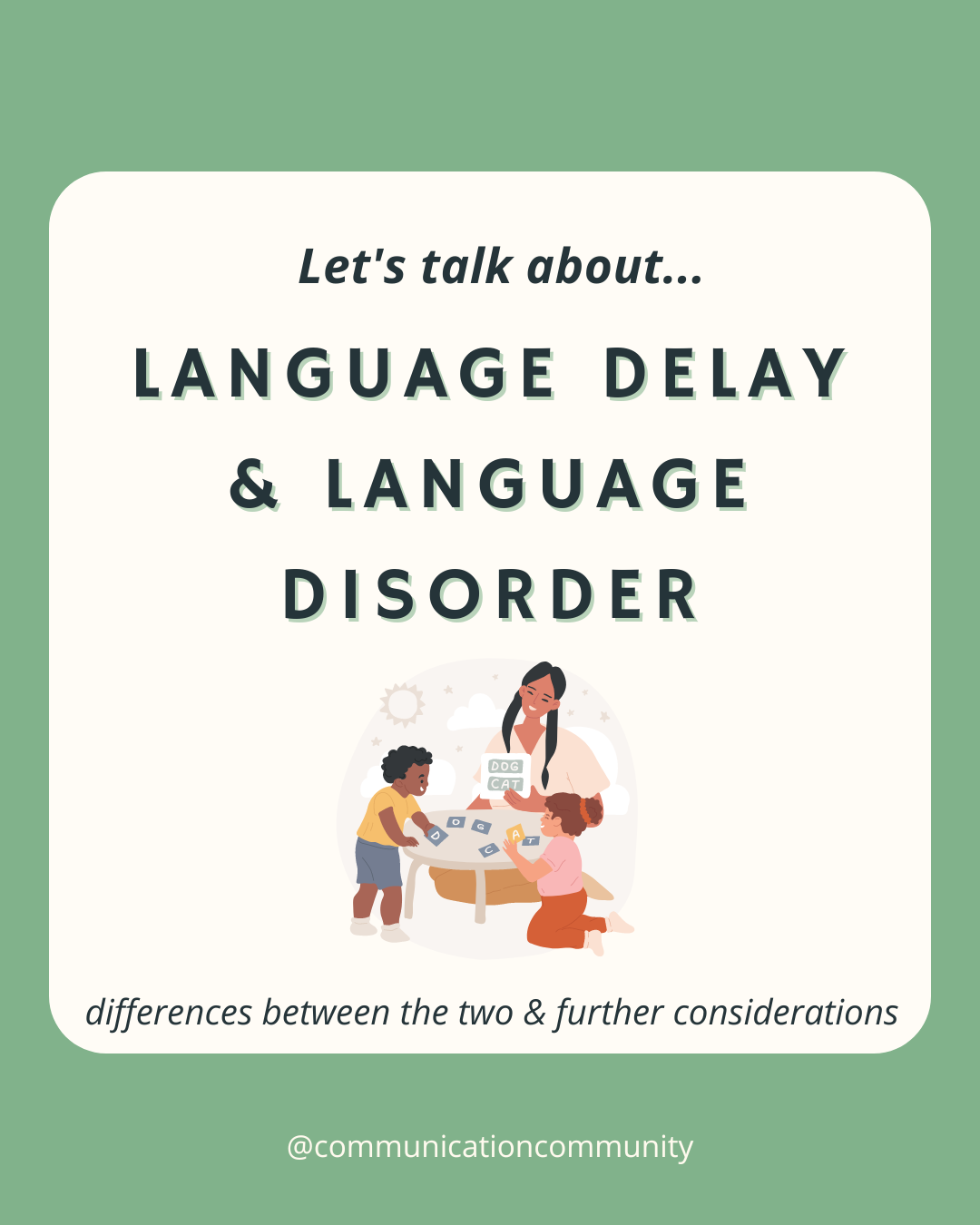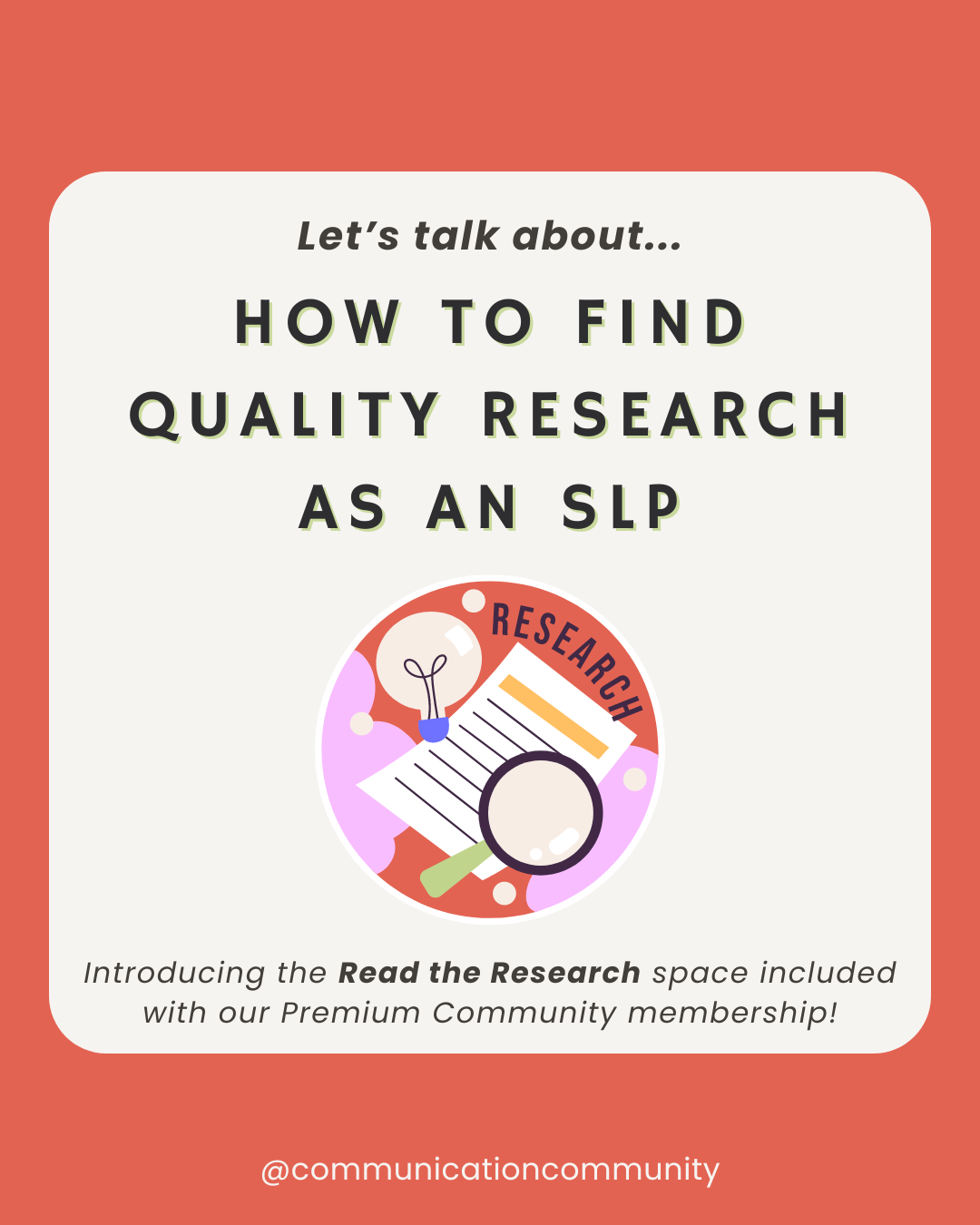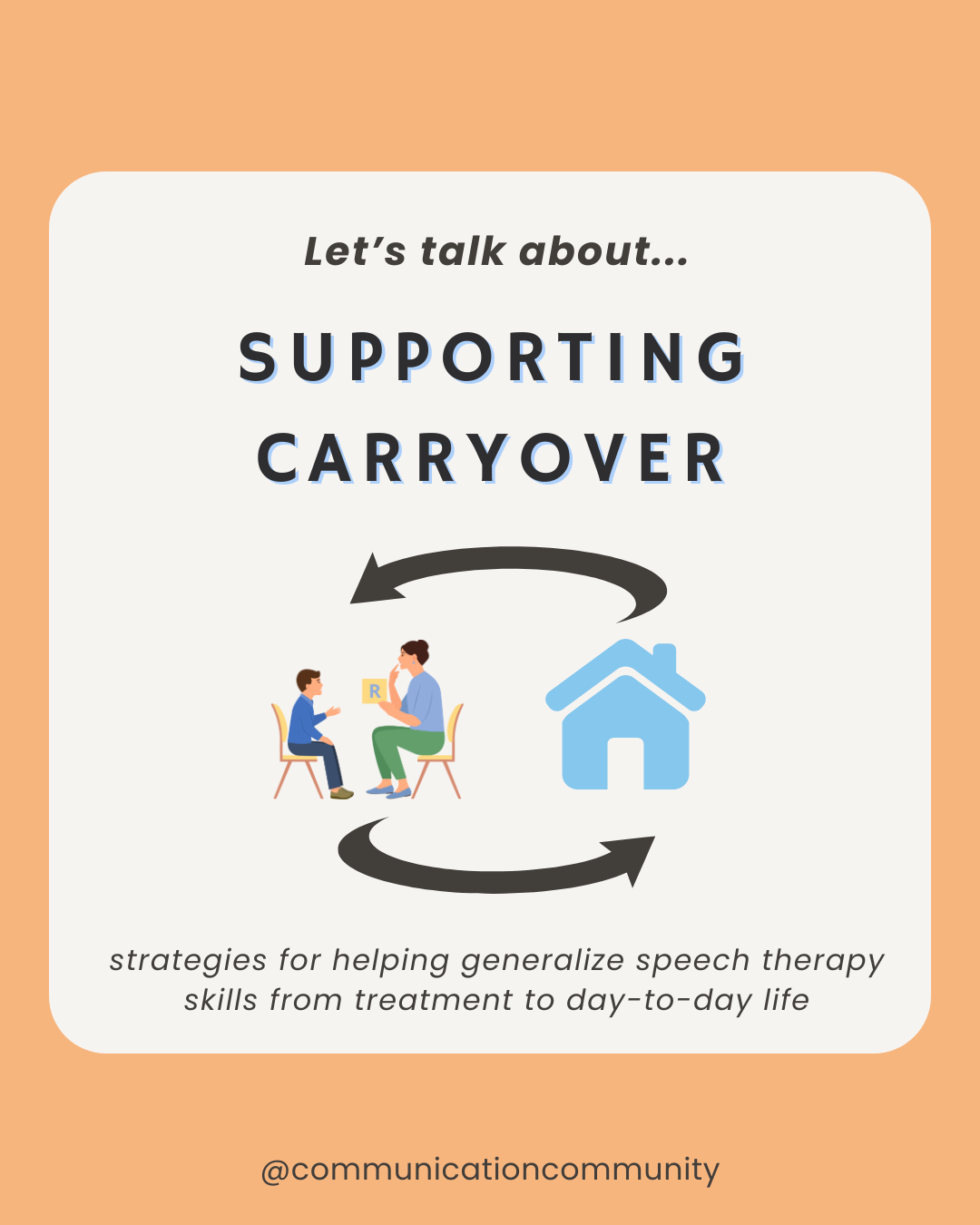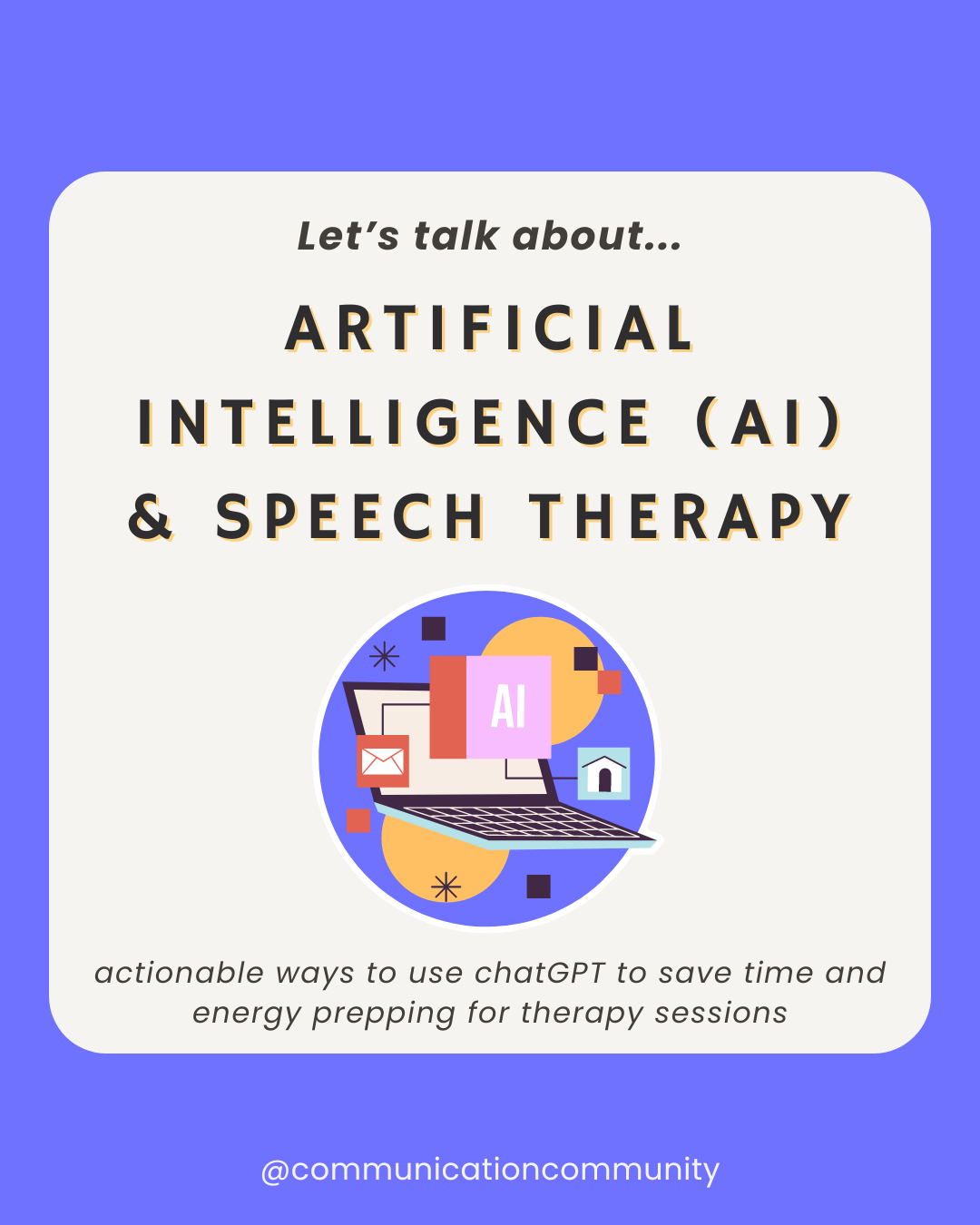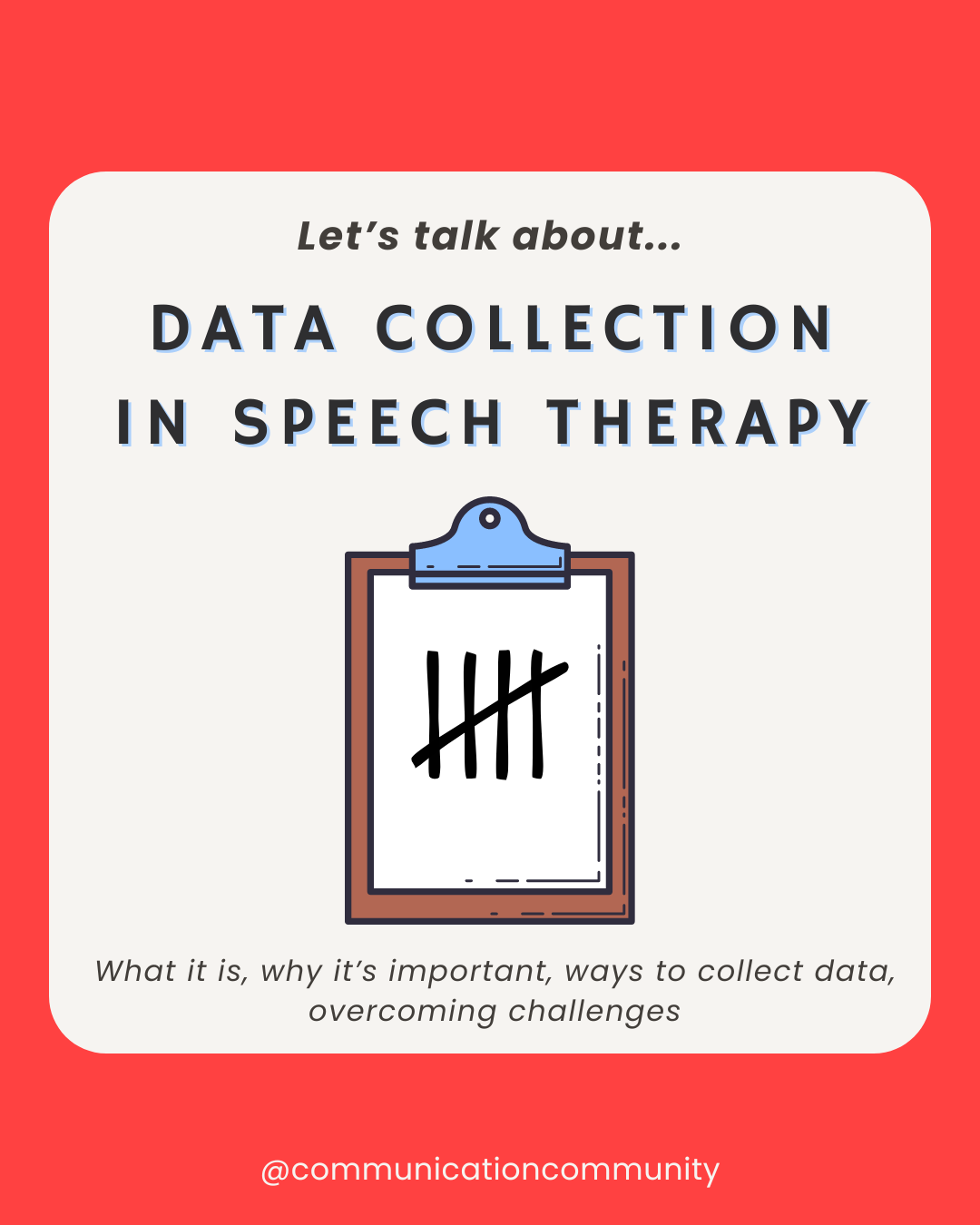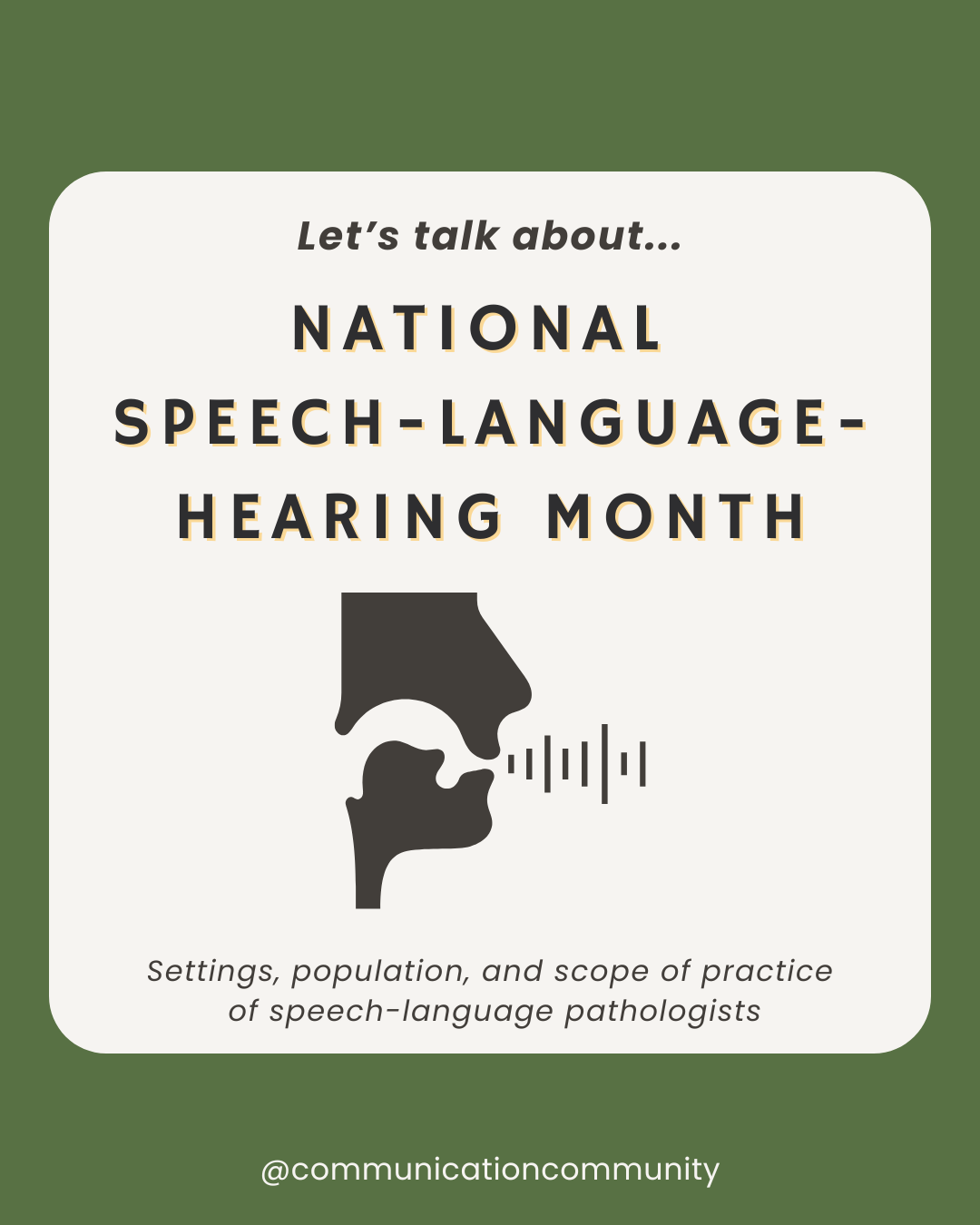The terms speech delay and language delay refer to when a child doesn't meet speech or language developmental milestones at the expected ages.
Having a speech and/or language delay is different from having a speech and/or language disorder.
***Note: Oftentimes, the term speech delay is used interchangeably with language delay. However, in clinical settings, these two differ (also mentioned above). Additionally, a child may have a speech AND language delay/disorder; hence, our use of “and/or.”
Difference Between a Language Delay and Language Disorder
Language Delay
Language delay is used when a child is developing language in the typical sequence but at a slower pace than their peers. For example, the child may not start using single words until they are two years old, when “on average,” children start doing so around their first birthday. Essentially, a child with a language delay is following the typical path of development but at a slower rate. You may hear the term late talker (between 18 - 30 months) to describe children who have limited spoken vocabulary for their age and do not have delays or concerns in other developmental areas (e.g., motor skills, cognition, etc.).
Language Disorder
Language disorder is used when a child's language skills are not developing in a typical way and the issues are more severe and persistent than expected in a language delay. This could include trouble understanding language (receptive language disorder), difficulty expressing thoughts and ideas (expressive language disorder), and/or issues with social aspects of communication (pragmatic language disorder).
What is a Speech Delay?
Speech delay typically refers to a delay in the development of speech sounds. A child with a speech delay might not appropriately say sounds and/or certain words by the expected age or may be more difficult to understand as compared to other individuals their age (this may also be referred to as unintelligible). If a speech delay continues into the child’s elementary years and they continue to be difficult to understand, they may have what’s known as a speech sound disorder. Read more about speech sound disorders here.
Does My Child Have a Language Delay?
Determining if your child has a language delay can be tricky; however, you know your child best! It is important that you bring any developmental concerns that you have observed to the right clinical professionals.
If you are a parent and suspect that your child has a language delay, you may have expressed your concerns to a trusted friend/family member, speech-language pathologist (SLP), or your child’s pediatrician after referencing developmental milestones for speech and language. Usually, these milestones will give you an indication if your child is “on track” to developing the speech and language skills appropriate for their age. It is common for parents to specifically focus on the milestones that only look at the number of words a child speaks; however, that is not the only important area to consider when it comes to language development! Receptive language (what your child understands) is a key area to consider as well, as understanding language is a foundational step before one can use language to communicate.
In any case, an SLP or your child’s pediatrician should be able to provide you with more information relating to these milestones, whether they are related to communication or other core areas of development (e.g., motor skills, cognition, etc.). Your pediatrician may also make a referral for a formal speech and language evaluation, which would be conducted by an SLP. An SLP is the professional who is specifically trained to assess, diagnose, and treat speech and language problems. They will use a combination of formal assessments, parent interviews, and direct observations to determine whether your child has a language delay or disorder.
What Do I Do if My Child Has a Language Delay?
If results from a speech-language evaluation determine that your child has language delay or disorder, the SLP who performed the evaluation will guide you through your next steps. Usually, this involves more education/counseling regarding speech and language development and tips for supporting communication in the home. This is typically paired with a recommendation for speech-language therapy services to provide your child with extra support. If your child is under the age of 3, they are eligible for a type of therapy known as Early Intervention (EI) (read more about EI services here). EI is federally mandated and funded at the state level, so services are provided free of charge to families, regardless of income.* Research consistently shows that participation in EI can make a significant difference in a child's development.
*It's important to note that while EI services are free, some states may charge families a sliding scale fee for services based on their income. However, no family can be denied services for their inability to pay these fees.
In summary, the key difference between language delay and disorder is the pattern of development. A delay implies that a child is following a typical path of language development but at a slower pace. This may resolve on its own or with intervention or may persist and be considered a disorder. It is true that if your child is not speaking as many words for their developmental age range, they may naturally “catch up” to their peers; however, as SLPs, we refrain from this wait-and-see method - we will tell you why below! A disorder, on the other hand, means the child's language is developing in a disordered or atypical way. The problems are more intrinsic and are unlikely to resolve without intervention.
Why the “Wait and See” Approach Can Be Problematic for Language Development:
SLPs tend to refrain from adopting a "wait and see" approach with children who have a limited speaking vocabulary because of several factors. For one, the first few years of a child’s life is crucial for language development. During this time, the brain is most receptive to learning and developing language skills. Waiting to see if a child outgrows a language delay could mean missing out on this vital period.
As mentioned above, receiving EI services is the most effective way to address language concerns and increase the likelihood of positive outcomes. With the attention of EI services, the team/SLP may also discover other possible underlying issues (e.g., hearing impairment, developmental condition, etc.) that may have been contributing to delays in the child’s language development.
References/further resources:
American Speech-Language-Hearing Association. (n.d.). Late Blooming or Language Problem. Retrieved from https://www.asha.org/public/speech/disorders/late-blooming-or-language-problem/
Fey, M. E., Warren, S. F., Brady, N., Finestack, L. H., Bredin-Oja, S. L., Fairchild, M., ... & Yoder, P. J. (2006). Early Effects of Prelinguistic Milieu Teaching and Responsivity Education for Children With Developmental Delays and Their Parents. Journal of Speech, Language, and Hearing Research, 49(3), 526-547. doi:10.1044/1092-4388(2006/038)
Speech and Hearing BC. (n.d.). Language Delay/Disorder. Retrieved from https://speechandhearingbc.ca/public/disorders/disorder-listing/language-delaydisorder/
WeeTalkers. (2021, March 8). Late Talkers: When To Worry. Retrieved from https://www.weetalkers.com/blog/late-talkers-when-to-worry

